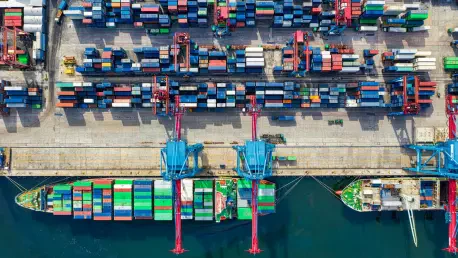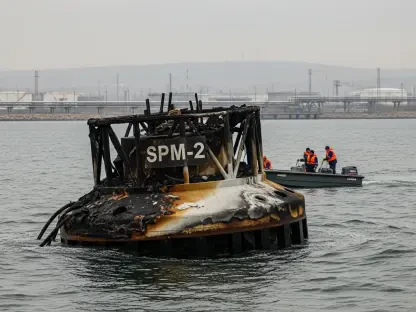As the world’s leading importer of raw materials, China’s trade patterns serve as a critical barometer for global economic health, and recent data reveals a striking shift that demands attention from analysts and industry leaders alike. In October, a significant downturn gripped the nation’s imports of major commodities such as crude oil, natural gas, and copper, driven largely by elevated global prices during key procurement windows. This pullback underscores a cautious stance among Chinese buyers grappling with cost pressures amid a complex economic landscape. However, not all resources followed this downward trajectory—iron ore emerged as a notable exception, maintaining robust import levels despite challenging conditions in related industries. This divergence raises questions about the interplay of price volatility, domestic priorities, and strategic planning in shaping China’s commodity trade. Understanding these trends offers valuable insight into both the nation’s economic strategies and their broader implications for international markets.
Global Price Pressures Weigh on Key Imports
The impact of soaring global prices on China’s commodity imports cannot be overstated, with several critical resources experiencing sharp declines in October. Crude oil imports fell to 11.39 million barrels per day, a slight drop from 11.50 million in September, reflecting the lingering effects of high Brent crude prices earlier in the year. This reduction signals a deliberate effort by refiners to manage costs when contract prices were at their peak. Natural gas imports also took a hit, declining by 11.5% to 9.78 million metric tons, as high spot prices for liquefied natural gas were exacerbated by fierce competition from European buyers. Similarly, copper imports dropped by 9.7% to 438,000 tons, pressured by a dramatic price surge in London contracts reaching unprecedented levels. These consistent declines across multiple sectors highlight a broader sensitivity to global cost fluctuations, illustrating how external market dynamics can swiftly alter import behavior even for a powerhouse like China.
Beyond the immediate numbers, the ripple effects of these high prices reveal deeper challenges for Chinese industries reliant on imported resources. For energy-intensive sectors, the elevated cost of crude oil and natural gas translates to higher operational expenses, potentially squeezing profit margins at a time when economic recovery remains uneven. In the case of copper, critical for manufacturing and construction, the price spike disrupts supply chains and may delay infrastructure projects that depend on steady material inflows. While some relief appears on the horizon with recent price corrections in oil markets, the lag between price drops and import recovery suggests that stockpiling or alternative sourcing strategies might dominate in the near term. This cautious approach to procurement under cost pressure not only reflects short-term adjustments but also hints at a recalibration of how China engages with volatile global commodity markets moving forward.
Coal Imports Defy Price Expectations
Contrary to what might be expected, low global prices do not always spur increased imports, as evidenced by the surprising decline in China’s coal purchases in October. Despite seaborne thermal coal prices lingering near five-year lows, imports fell by 9.3% to 41.74 million tons from 46.0 million tons in the prior month. This downturn suggests that factors beyond mere cost, such as sufficient domestic supply or strategic policy decisions, are influencing trade volumes. It’s plausible that China is prioritizing locally sourced coal to bolster internal production or reduce reliance on foreign markets during periods of uncertainty. This unexpected trend challenges the assumption that price alone dictates import decisions and points to a more nuanced interplay of economic and regulatory considerations shaping the coal sector.
Looking ahead, the trajectory for coal imports may shift due to seasonal and domestic pressures that are beginning to emerge. With the northern winter season approaching, demand for heating is expected to rise, potentially reversing the current downward trend in imports. Additionally, climbing domestic coal prices could make foreign supplies more attractive, prompting a rebound in trade volumes by year-end. This anticipated recovery underscores the cyclical nature of energy demand in China, where external price signals are often tempered by internal needs and environmental policies. The ability to pivot quickly in response to these changing dynamics highlights the adaptability of China’s energy strategy, balancing cost considerations with the imperative to ensure supply security during peak consumption periods.
Iron Ore’s Surprising Strength
Amid the widespread softening of commodity imports, iron ore stands out with remarkable resilience, defying broader market headwinds. October imports reached 111.31 million tons, a modest 4.3% decrease from September’s record high but a substantial 7.2% increase compared to the same period last year. This strength persists despite stable prices around $100 per ton and a troubling decline in steel production, which slumped to a 21-month low in September. The sustained import levels suggest that immediate industrial demand is not the sole driver behind these figures. Instead, a strategic focus on securing future supply appears to be at play, positioning iron ore as a critical outlier in an otherwise contracting import landscape.
Delving deeper into this trend, the surge in iron ore imports seems closely tied to inventory rebuilding efforts across Chinese ports. Stockpiles have climbed to a seven-month high of 138.44 million tons, indicating a proactive approach to buffer against potential supply disruptions or future price volatility. This stockpiling occurs even as steel output remains weak, hinting at expectations of a recovery in construction or manufacturing sectors down the line. Such forward-thinking behavior reflects a calculated effort to mitigate risks in a global market prone to sudden shifts, whether due to geopolitical tensions or logistical challenges. The robustness of iron ore imports, therefore, serves as a testament to China’s long-term planning in securing essential raw materials, even when short-term economic indicators suggest caution.
Domestic Dynamics and Seasonal Influences
China’s commodity import trends are not solely dictated by global prices; domestic economic conditions and seasonal factors play equally significant roles. The sluggish steel production, evident in recent months, points to reduced immediate demand for inputs like iron ore, yet the high import volumes indicate a strategic stockpiling effort to prepare for potential upticks in activity. This juxtaposition of weak current output with robust imports suggests confidence in future industrial recovery or a hedge against supply uncertainties. Meanwhile, for commodities like coal, the looming winter season is poised to drive demand higher, as northern regions brace for increased heating needs, potentially offsetting the current dip in trade figures.
These internal priorities reveal a complex balancing act between responding to immediate economic signals and planning for longer-term stability. The decision to build iron ore inventories, for instance, may also reflect concerns over global supply chain reliability, especially in light of past disruptions. Similarly, the expected rise in coal imports as winter nears demonstrates how seasonal imperatives can override temporary market softness. This interplay of domestic and cyclical factors underscores the multifaceted nature of China’s trade policies, where short-term cost pressures are weighed against the need to maintain resource security and support economic growth over extended horizons.
Market Ripples and Future Outlook
The fluctuations in China’s commodity imports reverberate far beyond its borders, influencing global market dynamics in profound ways. The retreat in crude oil, natural gas, and copper imports, prompted by earlier high prices, may ease as costs stabilize, potentially triggering a wave of renewed purchasing that could tighten supply elsewhere. This cyclical response to price movements illustrates China’s outsized role in setting global demand trends, often acting as a swing factor in commodity pricing. For industries worldwide, understanding these patterns is crucial for anticipating shifts in availability and cost, particularly in energy and metals sectors heavily reliant on Chinese consumption.
Furthermore, the steadfast demand for iron ore, driven by inventory accumulation, offers a stabilizing force for global supply chains, even as China’s industrial activity shows signs of slowing. This strategic stockpiling could temper price volatility in the near term, providing a buffer for producers and buyers alike. As lower prices for oil and coal begin to take hold, the possibility of increased imports in these categories looms, potentially reshaping market expectations. These evolving trends highlight the intricate dance between China’s domestic strategies and international commodity flows, signaling that vigilance and adaptability will be key for stakeholders navigating the uncertainties ahead.









